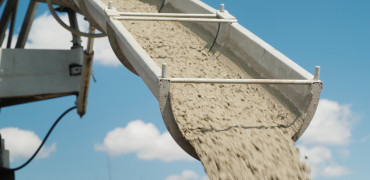Extreme advances in technology are leading the way rapidly towards an exciting new interactive era for the built environment around us. We will now be able to interact with our urban surroundings in ways that are almost unimaginable.
As we move into this new cycle it is important to remember that with commercial and industrial office buildings consuming almost 30% of the world’s energy, the potential advantages for our environment that smart buildings can offer are immense.
A smart building is any structure that uses automated processes to control a building’s operations, heating, ventilation, air, lighting and many others.
Climate change will be a critical driver for smart buildings
In-built resilience
As we advance into the future, the number of net-zero certified projects designed to redress and regulate carbon emissions will increase substantially.
It will also be imperative to make these smart buildings resilient against the impact of climate change.
Extreme climate conditions are now a global reality, from wildfires and droughts to flooding and tsunamis. Climate change will be a critical driver for smart buildings in both a domestic and commercial setting.
Protecting commercial and industrial buildings will become a focus as more building owners take measures in both design and build to mitigate against environmental damage.
With the extreme use of energy throughout the world both existing and new buildings will be built with renewable energy sources, green building materials and smart energy systems as standard.
Health and wellbeing
In addition to the above an increased focus on health, wellness and indoor air quality will become an important area for growth.
Studies have shown that there is a strong correlation between high concentrations of CO2 and reduced performance within the workplace. Schools, businesses and hospitals will turn their focus to the above.
In order to attract a workforce of tech savvy health conscious millennials, more and more architects and developers are looking to incorporate health and wellness into their smart buildings. Enriching the quality of our environments be it a hospital, office or classroom - leads to a direct increase in productivity and general wellbeing.
Smart control
The ability to control the working environment with smart technologies for example adjusting the light levels is an important factor in increasing employee satisfaction and performance. Using automated shading solutions can be invaluable in improving the light quality and eliminating the tiring glare effect during sunny times.
The new technology of Electrochromic Smart Glass, shuts out harsh solar radiation. The smart glass utilises small electric signals to charge the window pane, all the while altering and changing the amount of solar radiation it reflects or allows. Smart glass allows the commercial building or home to reduce costings with heating, ventilation and air conditioning.
Some further advances are in super efficient LED panels that require just a tiny trickle of electricity, motion detectors, carbon dioxide monitoring, solar thermal water heating systems, living walls, and many more.
Incentives
Building owners, designers, architects and specifiers all need to work together towards smarter and more sustainable commercial buildings and homes. Both environmental and legal incentives are now there, social and economic.
With the right technology achieving the ambitious goals set worldwide is now a reality and possible.
A failure to include smart technology within our built environment will suppress our progress and lock us into the many disadvantages of poor performing homes and businesses for decades and generations to come.
Be smart - literally.
Kirsty Hammond is publisher and editor of Specifier Review




